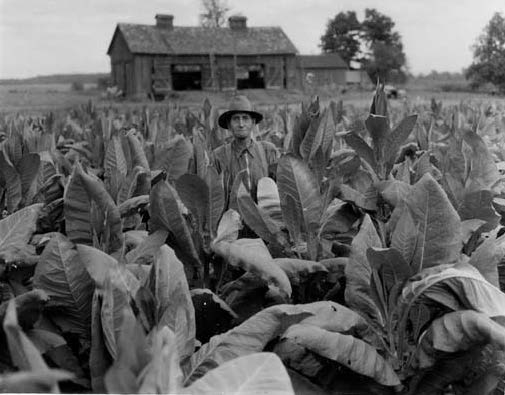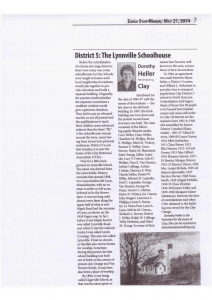Tobacco FarmingPosted on June 30, 2021 |
Image

|
HISTORY MYSTERY: Tobacco Farming
Fields of tobacco, sometimes as tall as a man and weathered curing sheds were once a common sight in Onondaga County particularly in the towns of Lysander, Van Buren and Clay. See the photo of Albert Hamlin standing in his field of tobacco with the drying shed in the background. Long before the first white man arrived on this continent, tobacco was grown in New York State – on the Niagara Frontier, in the Oneida Lake country, the Southern Tier and the Valley of the Susquehanna. Tobacco culture was re-introduced into the state around the middle of the 1800’s and tobacco became an important crop in Onondaga County, as well as other upstate areas.
One of the liveliest settlements in Onondaga’s tobacco land was Cigarville, on the Moyer’s Corners-
Cicero Road, a thriving little community which derived its Post Office’s name from its ranking industry, the manufacture of cigars from tobacco cultivated locally and from surrounding towns. In its hey-day, the Cigarville Factory employed between 75 and 100 men, described as a rowdy, rollicking, quick-tempered lot.
In 1881, the cigar makers went out on strike, in protest against an unjust foreman. The dismissal of the foreman temporarily settled the dispute, but his reinstatement and the importation of cigar strippers from New York City caused so unruly a disturbance that a telegram and messengers were dispatched with all haste to Syracuse to ask the sheriff and his deputies for aid. According to the Syracuse Currier of April, 1881, everything was quiet in Cigarville when the sheriff arrived. Some of the alien strippers had been persuaded to return to their homes and many of the “union” men were back at work. The owner of the factory meanwhile stoutly declared that he would bring in more hands from outside. According to Nancy Vars: “Whether he did or not is not recoded, but subsequent accounts of the strike relate that he was finally forced to close his factory.
Many of the cigar makers went into business for themselves, some individually, others co-operatively. But all the ventures failed and with them faded the name and glory of Cigarville. Before long, cabbage had become the major crop of the area and sauerkraut the main industry.
The Cigarville incident was merely a picturesque anecdote. Nevertheless, the passing of Cigarville presaged the closing of an era. The substitution of other crops for tobacco was fast becoming a general trend throughout the state. New York farmers discovered that raising tobacco was no longer profitable. A few farms in Onondaga County continued to grow tobacco until at least as recently as 1937. According to a Post-Standard article of December 1, 1957: “Tobacco culture in New York centered for the most part around Elmira. It was regarded as a negligible enterprise, interesting, perhaps, only as a novelty.”
Dorothy Heller, Historian
6-30-21
Other
History Mysteries

Jerome Fire Equipment Company
History Mystery | Jul 29, 2021
HISTORY MYSTERY: Jerome Fire Equipment Company


